Lilac Bush: Floral Fragrance In Your Homes
Lilac bushes bring natural fragrance and beauty to your home. In addition to their appealing aroma, they offer a striking blend of color and scent. As a result, many homemakers and interior designers cherish lilac bushes. Not only do they add charm to both indoor and outdoor spaces, but they are also easy to care for, making them a practical choice for any home. Ultimately, these plants help bring nature closer to your living space.
In this article, we will explore the varieties, aesthetic features, and essential care tips for lilac bushes. Furthermore, we will discuss where to buy them and the climates in which they grow best. You will also discover creative ideas to incorporate lilac bushes into your décor. Let this guide inspire you to create a natural haven right at home.Video Credit: Garden Answer – Bloomerang Lilac Update! 💜👍🌿
A Brief History of Lilac Bush
Lilac bushes have a rich history that spans many centuries. Originally, they grew in Europe and Asia. People long ago treasured their delightful fragrance. Over time, lilac bushes became symbols of love and purity. Their blossoms, in particular, marked the arrival of spring.
Moreover, many cultures embrace the lilac for its beauty and symbolism. Gardeners in ancient times revered its natural charm. As the years passed, the lilac bush evolved and spread across the globe. Today, its historical allure continues to influence modern garden design. Consequently, plant lovers around the world remain captivated by its timeless aura.
Varieties of Lilac
Common Lilac Varieties
Common varieties of lilac are loved by many gardeners. For instance, the English lilac offers vibrant purple blossoms. It blooms profusely during the spring, and its fragrance fills the air with a natural aroma. Additionally, this variety is simple to care for and hardy in many regions.
Another favorite is the Japanese tree lilac. Unlike the English lilac, it features a unique tree-like form with elegant blooms. Its impressive size makes it well-suited for larger gardens and spacious yards. Overall, these common types make excellent additions to any home landscape, as they provide a traditional charm that complements many styles.Unique Lilac Varieties
Unique lilac varieties bring an unexpected twist to your garden. For example, some exhibit rare hues like deep mauve or soft white. In some cases, their blossoms even combine colors for an artistic effect. As a result, these varieties often serve as conversation pieces. While they may require a bit more care, they offer a rewarding visual appeal that makes the effort worthwhile.
In addition, distinct varieties often display unusual leaf patterns. Their textured foliage beautifully complements the striking blossoms. Consequently, they stand out against more conventional garden plants. This uniqueness is ideal for homemakers seeking a signature look, as these lilacs add originality and flair to any living space.Hybrid Varieties
Hybrid lilac bushes are bred for enhanced performance. Specifically, they combine the best traits of both common and unique varieties. As a result, hybrids often exhibit a stronger fragrance and improved disease resistance. In many cases, they also bloom longer than standard types. Because of this salient feature, busy gardeners often gravitate toward them.
Furthermore, these hybrids are engineered to adapt to diverse climates. They offer a balanced mix of color and scent, making them a versatile option. For this reason, many interior designers favor them for their reliability and aesthetic appeal. Thanks to their robust nature, hybrids suit a variety of garden styles. In essence, they are a modern twist on a classic plant.Aesthetic Features of Lilac Bush
Colorful Blossoms
Lilac bushes display blossoms in stunning shades of purple. Their petals can be light or deep in tone, offering a beautiful range of color. As a result, the delicate flowers create a picturesque scene that brings any garden to life. Moreover, the blossoms contrast beautifully with lush green foliage, enhancing their overall visual impact.
In addition, these colorful blooms serve as natural art pieces. They can effortlessly complement both rustic and modern décor styles. Their soft hues evoke feelings of calm and elegance, making them a soothing presence in any space. Furthermore, they pair well with other flowering plants, adding depth and dimension. Without a doubt, their visual appeal is undeniable in every setting.Fragrant Scent
The scent of a lilac bush is naturally sweet and inviting. As it fills the air with a calming aroma, this fragrance lifts spirits and soothes the mind. For many, it brings back memories of fresh spring mornings. Even a gentle whiff can evoke warm, nostalgic feelings.
Moreover, homeowners often appreciate the subtle yet persistent aroma. While the smell is not overpowering, it remains deeply enchanting. In fact, it creates a natural air freshener for your living spaces. Additionally, the fragrance acts as a mood enhancer, helping to transform everyday moments into sensory delights.Texture and Form
Lilac bushes offer a unique texture that complements any garden. Their leaves are smooth and lance-shaped, contributing to their refined appearance. Additionally, the branching form creates an organic, flowing structure that enhances the natural beauty of outdoor spaces. The interplay of light and shadow on the foliage further adds visual interest and depth.
Beyond aesthetics, their overall form is both elegant and practical. For instance, the bush can be pruned easily to maintain a neat, tidy shape. At the same time, its natural growth pattern forms a perfect frame for seasonal blooms. This structural beauty makes lilacs a valuable addition to both traditional and modern gardens, serving as a versatile and timeless design element.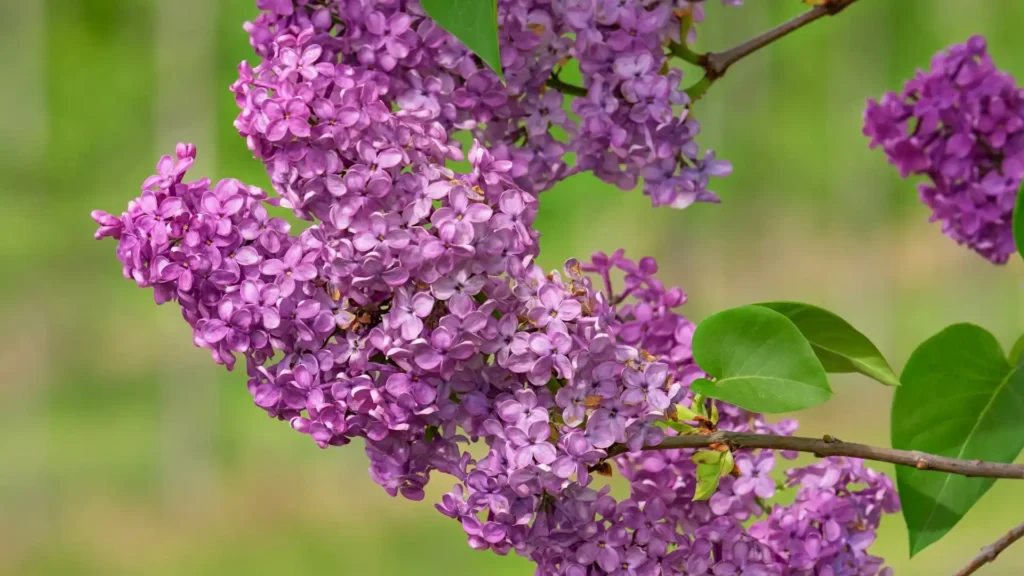
Where to Get a Lilac Bush
Local Nurseries
Local nurseries are a great starting point when purchasing a lilac bush. Not only do they offer a variety of healthy plants, but they also provide access to knowledgeable experts who can answer your questions. Additionally, you have the advantage of seeing the plant in person before making a purchase. Many local nurseries also host seasonal promotions and events, adding value to your visit.
Furthermore, visiting a local nursery allows you to gauge the plant’s condition firsthand. You can ask for personalized advice on care and placement, which is especially helpful for new gardeners. This hands-on experience builds confidence in your gardening choices. More importantly, it supports local businesses—offering you both quality and a sense of community connection.Online Stores
Online stores offer both convenience and variety. In fact, many reputable sites provide a wide selection of lilac bushes and deliver them directly to your doorstep. Additionally, customer reviews can guide your decision-making, helping you choose the best option. When shopping online, high ratings and clear return policies are essential for identifying trustworthy sellers.
Moreover, purchasing online saves time and often provides access to better deals. You can easily compare prices across multiple websites, ensuring you get the best value. Just make sure the seller includes proper care instructions and offers guarantees on plant quality. Overall, this method suits busy lifestyles and aligns well with modern shopping habits.Garden Centers
Garden centers are another excellent resource for purchasing lilac bushes. Typically, they feature a curated collection of plants and display them in an attractive, inspiring manner. In addition, knowledgeable staff are available to offer expert tips and recommendations. You may even discover rare or seasonal varieties that aren’t available elsewhere.
Furthermore, garden centers often host workshops and demonstrations, providing valuable information that can boost your gardening confidence. They also offer complementary gardening tools and supplies, making your visit even more productive. Above all, the ambiance of a garden center sparks creativity, making it a true one-stop shop for plant lovers and landscape enthusiasts alike.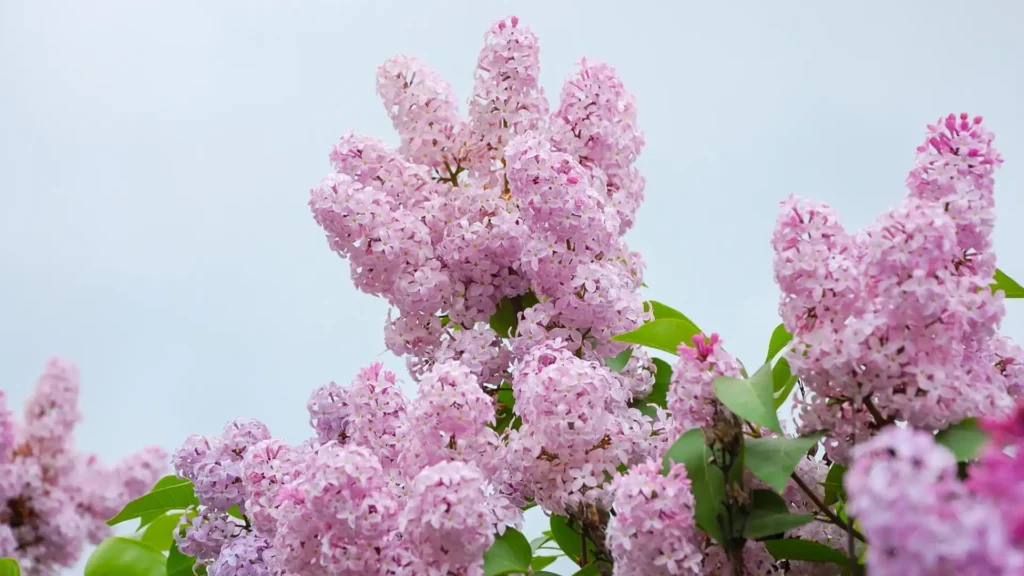
How to Care for a Lilac Bush
Planting Tips
Well-drained soil and a spot with full sunlight are the best conditions for a lilac bush’s growth. Ideally, planting in early spring yields the best results, as the soil is workable and the plant has ample time to establish. When preparing the site, dig a hole slightly larger than the root ball to accommodate root expansion. Additionally, mixing compost into the soil will enrich it with essential nutrients. Once ready, place the lilac gently in the hole and firm the soil around it to secure the plant.
Furthermore, ensure that the planting location is sheltered from strong winds, as protection helps the plant thrive. A spot near a fence or wall can offer just the right amount of shelter. It’s also important to space the bushes adequately, allowing room for their natural spread and air circulation. With thoughtful planning and proper placement, your lilac bushes will be well-positioned for healthy, vibrant blooms.Watering and Fertilizing
Water your lilac bush consistently to maintain healthy growth. Ideally, the soil should remain moist but not soggy, as excessive moisture can lead to root rot. Be sure to water deeply so that the moisture reaches the root zone. Then, wait until the topsoil dries slightly before watering again. During warmer months, additional watering may be necessary to compensate for faster evaporation.
In addition to proper watering, fertilizing plays a key role in the plant’s development. Apply a balanced fertilizer in early spring to support new growth. Organic fertilizers are an excellent choice, as they provide steady nourishment throughout the season. However, be cautious not to over-fertilize, as this can harm the plant. Instead, regular and moderate feeding promotes robust, sustainable growth.Pruning and Maintenance
Pruning is vital to maintain a neat and healthy lilac bush. To begin with, trim any dead or damaged branches as soon as you notice them. Not only does pruning improve the plant’s overall appearance, but it also enhances airflow and reduces the risk of disease. For best results, always prune right after the flowering period. This timing is crucial, as it allows the plant to set buds for the following season.
Additionally, use clean, sharp tools to make precise cuts. Be sure to remove any crossing or crowded branches to promote an open structure. This kind of careful maintenance helps shape the plant naturally while encouraging strong growth. Regular pruning keeps the bush both aesthetically pleasing and healthy, preventing overcrowding and supporting fresh blooms year after year.Pest and Disease Management
It’s important to monitor your lilac bush regularly for signs of pests. Aphids and scale insects are among the most common culprits, often found on leaves and stems. To catch infestations early, inspect the plant closely during your routine care. If pests are detected, consider treating them with natural remedies—such as a mild soap solution—which is effective and gentle on the plant.
In addition to pests, fungal diseases can develop in overly damp conditions. To reduce this risk, ensure that your lilac bush is planted in well-drained soil and receives adequate airflow. Removing fallen leaves and debris from around the base also helps prevent fungal buildup. Ultimately, early detection and consistent care help maintain plant health and minimize the need for harsh chemicals.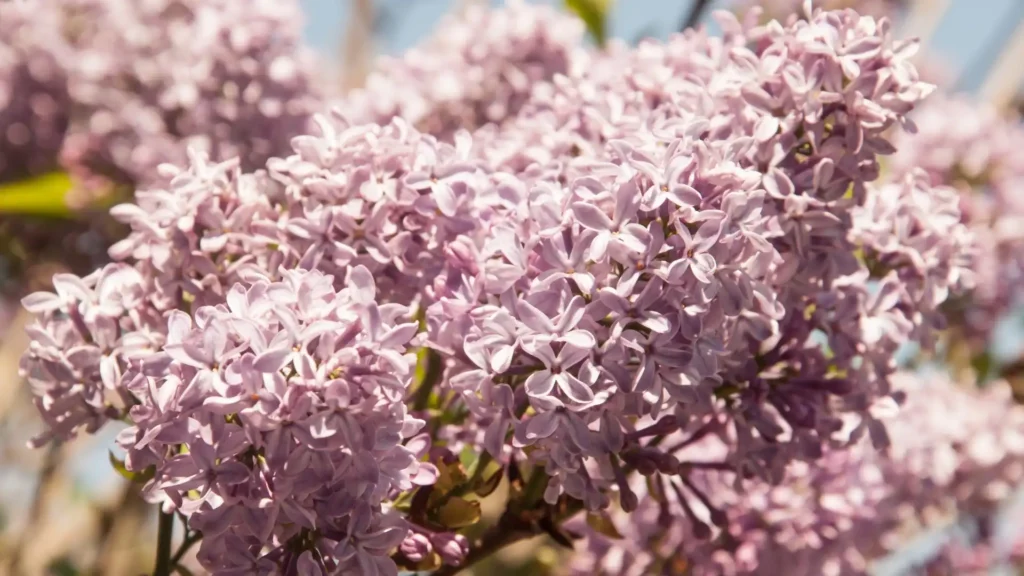
Best Climates for Growing Lilac Bush
Ideal Temperature Ranges
Lilac bushes prefer cool to mild temperatures, thriving best between 60°F and 75°F. These moderate ranges allow the plant to develop strong roots and produce vibrant blooms. On the other hand, extreme heat can stress the plant and diminish the quality of its flowers. Fortunately, in colder climates, lilacs can tolerate winter chills—especially if they are well-protected.
Maintaining these ideal temperatures is key to supporting optimal flowering. As such, it’s important to consider seasonal temperature shifts in your area before planting. Choose a location that offers protection from harsh conditions while still providing full sunlight. With this careful balance, your lilac bush will flourish, showcasing its full beauty season after season.Soil and Sunlight Preferences
Well-drained, fertile soil is key for growing healthy lilac bushes. These plants thrive in full sun, which is essential for maximum bloom production. Their roots perform best in loose, nutrient-rich soil, allowing them to spread and absorb nutrients effectively. While lilacs can tolerate partial shade, it often results in fewer and less vibrant flowers. Therefore, keeping the soil loose and well-draining is crucial.
Moreover, the right soil conditions enhance both the color and fragrance of lilac blossoms. Adding rich organic matter—such as compost or well-rotted manure—significantly improves the plant’s overall health. In combination with ample sunlight, these conditions create an ideal environment for lush growth and beautiful blooms. By focusing on soil quality and sun exposure, you set the stage for a thriving lilac bush.Regional Considerations
Your local climate plays a significant role in lilac care. Ideally, regions with mild winters and cool summers provide the best conditions for these plants. However, in areas with harsh, dry summers, lilacs may require extra watering to stay healthy. Similarly, in humid climates, it’s important to monitor for fungal diseases, which can develop quickly in damp conditions. For the most accurate guidance, consult gardening experts in your area—they can offer tailored advice based on local growing conditions.
Additionally, it’s wise to adjust care routines based on regional weather patterns. Even microclimates within your own garden—such as shaded corners or windy spots—can impact growth. During extreme weather events, protective measures like mulching or temporary shading can help. The more you understand your environment, the better your lilac bush will thrive. In the end, local considerations are essential for ensuring long-term health and beauty.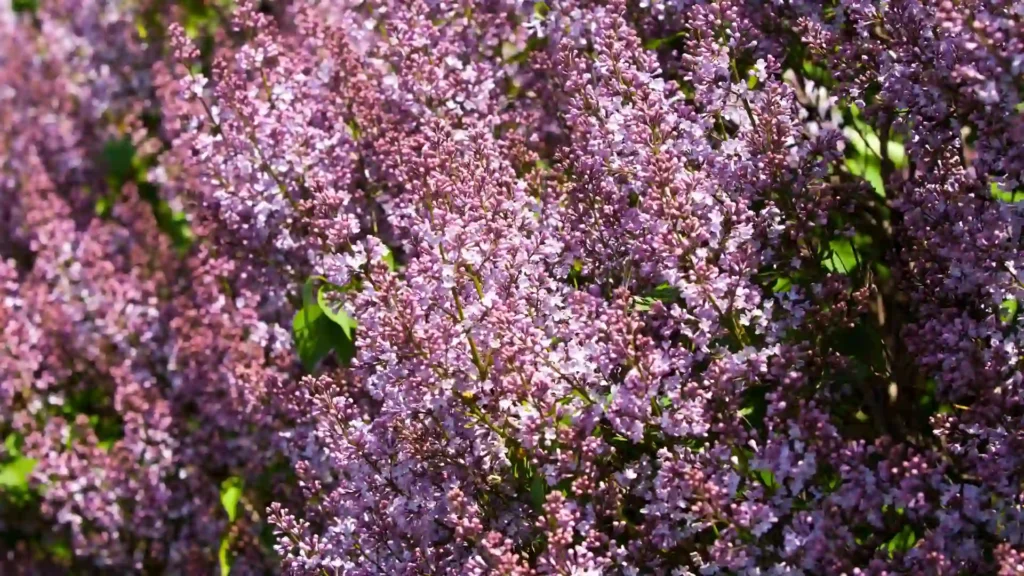
Incorporating Lilac Bush in Home Design
Indoor Displays
You can also grow lilac bushes indoors by planting them in containers. To start, choose a pot with proper drainage to prevent water buildup and root rot. Then, place the container near a sunny window, as lilacs still require plenty of light to thrive. Indoor lilac bushes are a charming way to brighten up small spaces while infusing your home with their gentle, natural fragrance.
Moreover, any room can be elevated by the elegant presence of a blooming lilac. Consider using decorative pots that complement your existing décor style for a cohesive look. Their compact size makes them perfect for apartments or homes with limited yard space. These indoor displays create a mini oasis in your living room or kitchen, allowing you to enjoy nature’s beauty as a fragrant, living companion.
Outdoor Landscaping
In your garden, lilac bushes serve as stunning focal points that draw the eye and elevate the overall design. You can use them as hedges for structure or as standalone features to showcase their full beauty. Their soft, natural form helps to balance and soften harder landscape elements. For an inviting look, consider pairing lilacs with stone paths or placing them near wooden benches where their fragrance can be fully enjoyed.
Moreover, outdoor landscaping with lilac bushes is incredibly versatile. These plants complement both modern and rustic settings, seamlessly blending into a variety of styles. Their seasonal blooms provide changing visual interest throughout the year. Whether you use them to frame walkways, accent flower beds, or anchor garden corners, lilacs bring an organic charm that enriches any outdoor space.
Seasonal Arrangements
To begin with, lilac bushes are perfect for seasonal décor. Their blooms naturally signal the arrival of spring, making them ideal for seasonal centerpieces or outdoor arrangements. In particular, they pair beautifully with other spring flowers, and their vibrant colors evoke feelings of renewal and joy.
As the seasons progress, consider swapping decorative elements to match the changing landscape. For instance, in autumn, lilacs can be combined with warm-toned plants to reflect the cozy atmosphere. Meanwhile, during winter, their evergreen structure serves as a lovely backdrop for festive decorations. Ultimately, seasonal arrangements keep your décor fresh and dynamic. All year long, lilac bushes inspire creative, nature-infused designs that bring beauty indoors and out.
Benefits of Having a Lilac Bush at Home
All things considered, bringing a lilac bush into your home offers numerous benefits. For one, their natural fragrance can uplift your mood and create a sense of tranquility. Additionally, the soft blossoms provide a calming visual treat. Not to mention, beneficial pollinators like butterflies and bees are drawn to lilacs, which in turn supports a thriving garden ecosystem.
Furthermore, a lilac bush enhances both the aesthetics and the environment. It acts as a natural air freshener while also encouraging outdoor activities and sparking joy in gardening. What’s more, many homemakers appreciate the plant’s low-maintenance nature. In the end, their beauty not only boosts curb appeal but also contributes to overall well-being.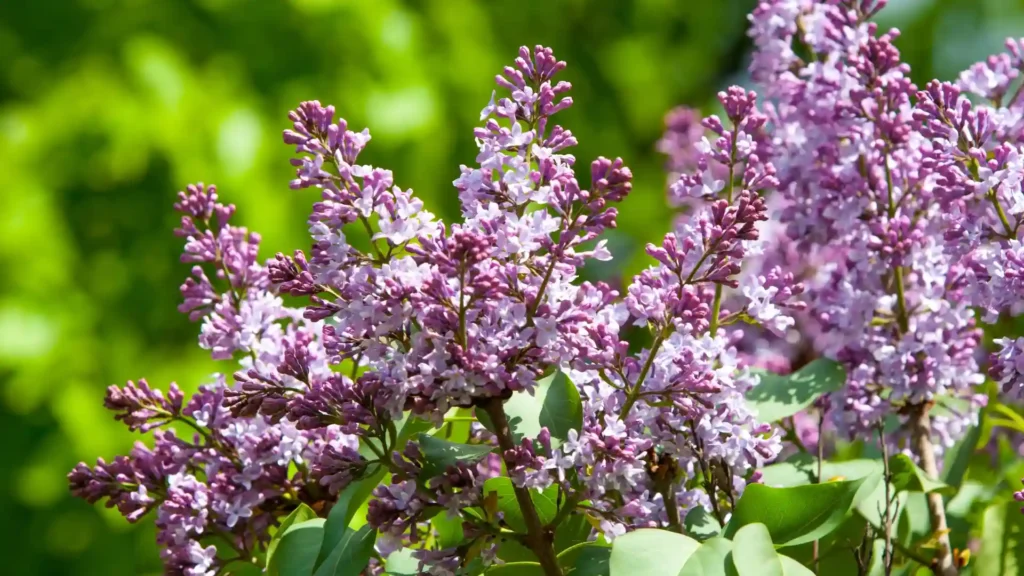
Tips for Homemakers and Interior Designers
For homemakers and interior designers alike, lilac bushes offer a beautiful way to transform living spaces. To start, use these plants to introduce a natural element into your décor. Their soft, soothing colors blend well with a wide range of design styles. For a refreshing ambiance, consider placing a lilac bush near seating areas or entryways.
Moreover, rotating your plants seasonally keeps the overall look dynamic and engaging. By integrating natural textures and earthy tones, you can further enhance the calming effect. In particular, the lilac’s organic charm pairs effortlessly with sleek, modern furnishings, striking a perfect balance between comfort and style. Ultimately, embracing creativity and letting nature guide your design choices can result in a warm, inviting atmosphere year-round.Challenges and Solutions in Growing Lilac Bush
Common Issues Faced
Effective Solutions
To ensure your lilac bush remains healthy, it’s best to use organic pesticides for safe and effective pest control. In addition, managing your watering routine mindfully helps prevent excess moisture, which can lead to root rot or fungal issues. Consistent yet moderate watering is key.
Equally important, prune your lilac bush carefully to remove dead wood and improve airflow within the plant. This simple step enhances overall plant health and reduces the risk of disease. Furthermore, maintaining clean surroundings—by clearing fallen leaves and debris—creates a healthier growing environment. When in doubt, don’t hesitate to consult local gardening experts for personalized guidance. With the right care and solutions, your lilac bush will thrive beautifully.
